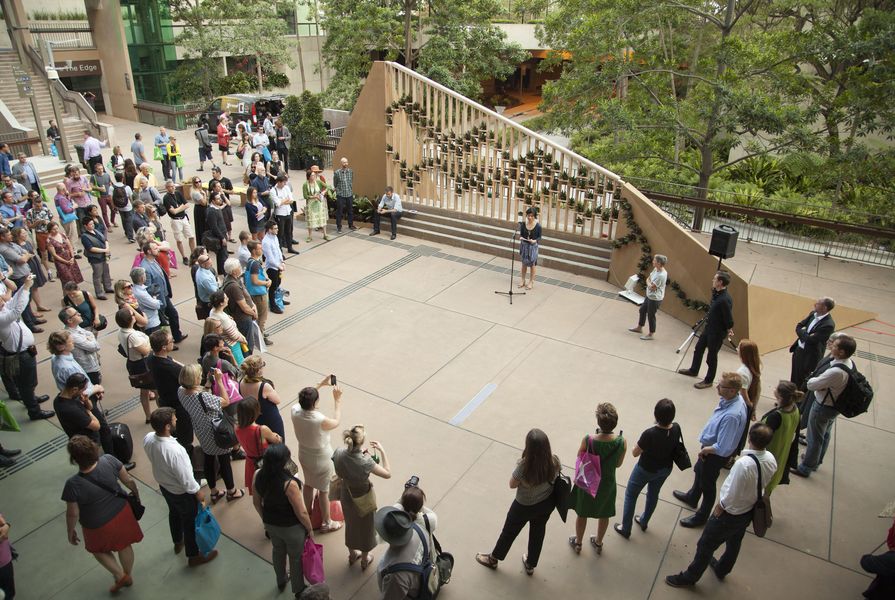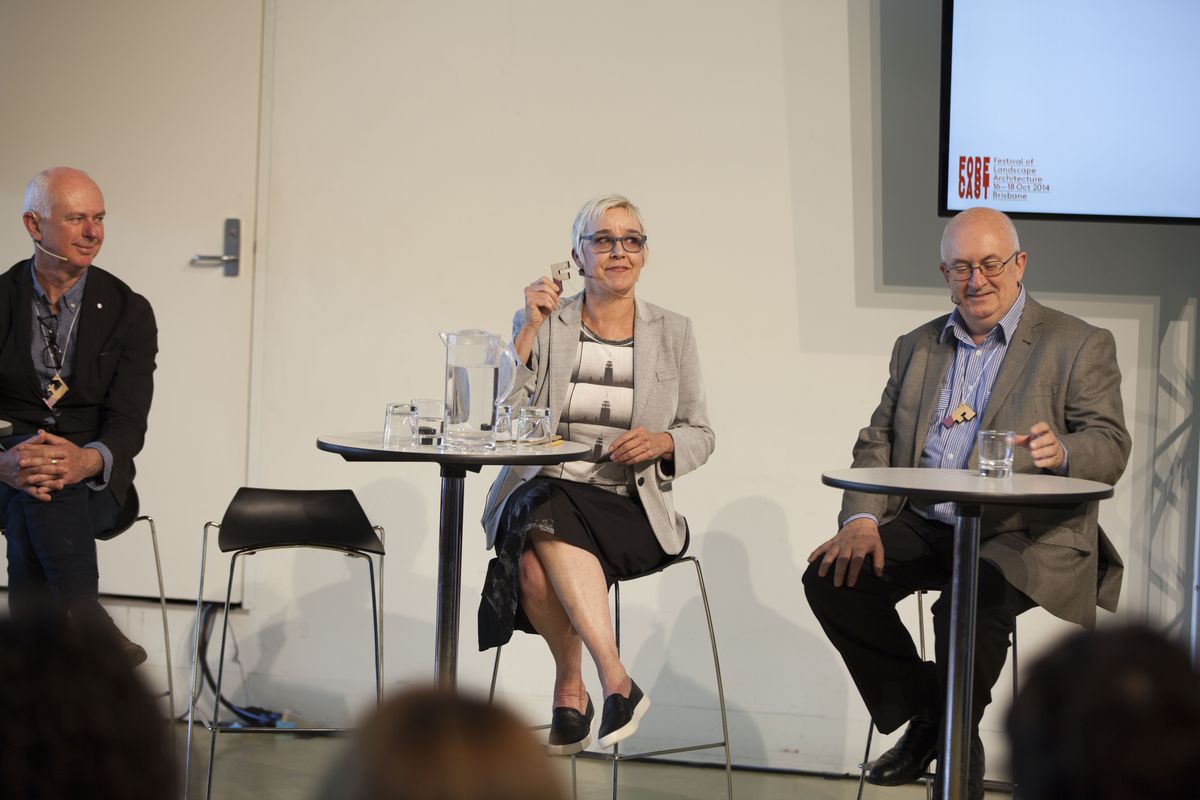“My idea of good company is the company of clever, well-informed people who have a great deal of conversation; that is what I call good company.”
– Jane Austen
This year’s inaugural Festival of Landscape Architecture was convened over two-and-a-half warm October days in Brisbane. In order to avoid the often enervating effect of the standard conference format, the Australian Institute of Landscape Architects has opted to reinvigorate what was a biannual national event as an annual festival – that is, as a celebratory gathering embracing lively conversation, facilitating the exchange of ideas and consequently permitting discourse.
Many attempts to orchestrate engaged public conversation default to being “monologues delivered in the presence of witnesses,” to borrow a phrase from author Margaret Millar. This was certainly not the case in Brisbane and the overall success of the occasion was undoubtedly due to efforts by creative directors Di Snape, Sharon Mackay and Catherin Bull to foster an open, participatory event.
The choice of the lecture theatre of the State Library of Queensland was a particularly inspired decision, as was opening it to the air throughout the event and the reconfiguring of the auditorium as a space almost in the round. By so doing, the creative directors offered an immersive experience and a welcome sense of interconnection, not only between interior and exterior but also between invited speakers and festival participants.
The festival kicked off with a series of fringe events followed by an opening party at the State Library of Queensland.
Image: Orion Zuyderhoff-Gray
Complementing this strategic staging was an equally deft organization of the “good company.” This included the panel format, the choice of speakers on each panel and the requirement that each speaker give short, pithy presentations in relation to particular themes, questions or provocations. This curation of panel discussions rather than of keynote addresses was strengthened and, dare I say, ornamented by some great performers as session MCs. In this role both Tim Horton and Jerry de Gryse were particular standouts, for their abilities as raconteurs and their intelligent prompting and orchestration of ensuing conversation.
This strategic organization, combined with the tactical choreographing of pop-up food and drink stalls, the temporary installation by Tract and the engagement of the media (radio hosts Stuart Harrison and Jo Russell-Clarke covered the festival with roving student “reporters” from the RMIT University landscape architecture program), was successful in transforming the “conference” site into a vibrant event space: one in which a festival did indeed ensue.
Samuel Johnson once famously remarked, “The happiest conversation is that of which nothing is distinctly remembered but a general effect of pleasing impression.” A general pleasing impression was indeed crafted for the festival participants. However, far from being forgotten, some things are distinctly remembered. Every session generated discussion and insights. In particular, the session on “tactical urbanism” and cultural engagement, with its discussion of action plans, population engagement and activation rather than masterplans, all voiced by the eloquent Pamille Berg, the inspiring Andrew Just, the provocative Julie Bargmann and the modest Chris Sawyer, was a standout.
Some discursive threads emerged during the festival. These seemed to arise from discussions of diversity of practice, cross-disciplinary collaboration and effective agency across scales, of advocacy not only of the natural environment but also of a civil society, of practice as research and the need for effective research alliances to enable the production and mobilization of meaningful data.
Weaving these particular threads together makes it clear that landscape architecture could be identified (as Sawyer posited) as a revitalized “civil servant,” one with the capacities of strategic and tactical thinking but also problem setting as well as problem solving. This would establish the profession as one of considerable agency, eminently placed to effect a rapprochement of urban and natural systems and one that (with a nod to OMA) has part of its core business the ability to sell design as research, not just sets of drawings.
Michel de Montaigne once warned that “there is no conversation more boring than the one where everybody agrees.” This is not to say that the Festival of Landscape Architecture was boring but there was a feeling of general consensus, which, combined with the overall air of goodwill, lent the occasion a somewhat self-congratulatory air. The occasion needed more provocation, more feistiness, more conversational friction or engagement across difference of position, thought and discipline. Bargmann was the sole agent provocateur or conscious irritant, which was neither effective nor fair.
As one last note, it would be truly inspiring to attend a gathering of landscape architects where considerable time and energy wasn’t spent bemoaning the lack of understanding and recognition, decrying not being “at the table,” delivering endless exhortations to “step up,” and constantly worrying over “what it is that we do.” This speaks of debilitating self-doubt and a lack of self-confidence in the profession. Mature self-critique and evaluation combined with an ambition for ongoing development are all signs of a healthy organization and to some extent are to be expected at any in-house event. But instead of always looking to the future and excusing itself for now due to its youth, surely it is time the profession’s energies were spent in getting on and demonstrating its extraordinary range of capabilities, expertise and achievements. As someone quipped during the festival, sometimes it is better to seek forgiveness than permission.
Landscape architecture and landscape architects have already taken many “steps up” and are at not just one table but many tables. Landscape architecture truly has become the terrain upon which all our futures are being contested. We should be expansive in our engagement, venture our knowledge and know-how, and have confidence in our particular and diverse expertise, all in order to simply declare and robustly debate what it is we do.
So, in the spirit of the festival, this is not so much a forecast as it is a simple statement of the here and now. If I can misappropriate William Gibson: the future of landscape architecture is already here, it’s just unevenly understood.





















